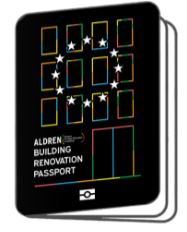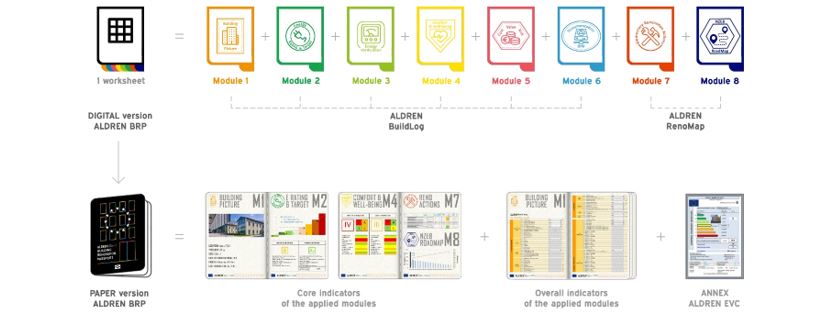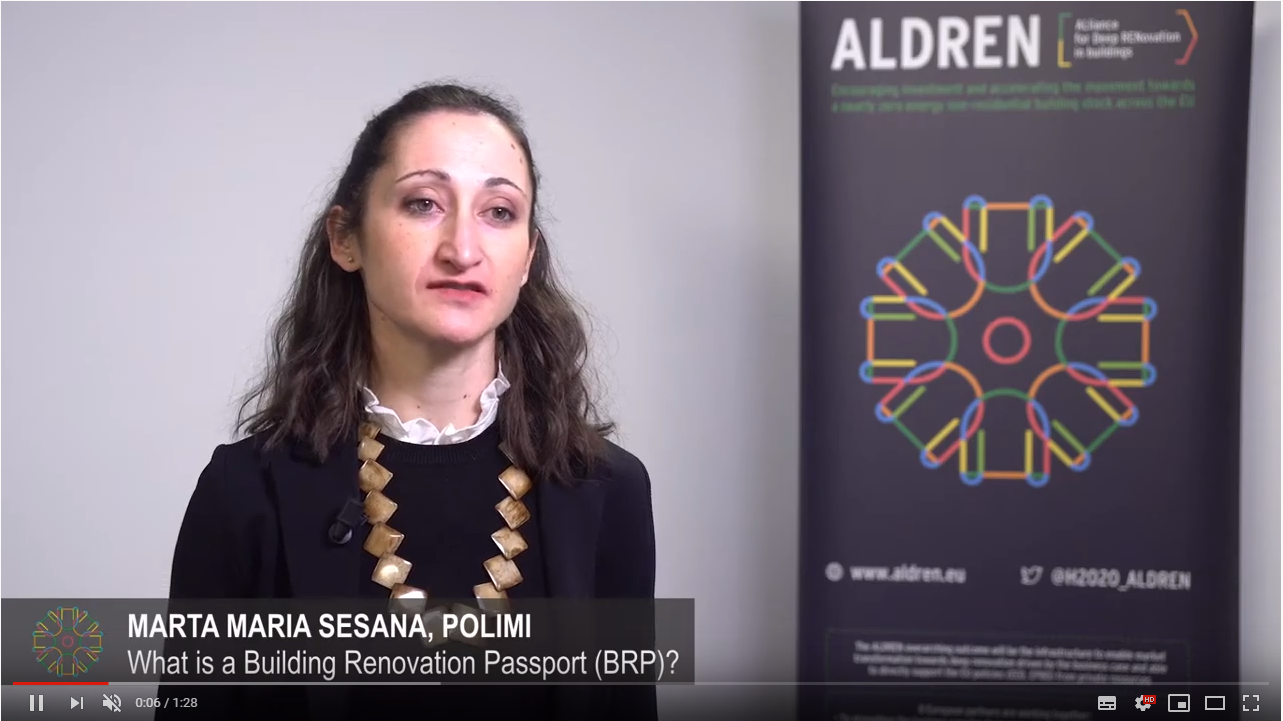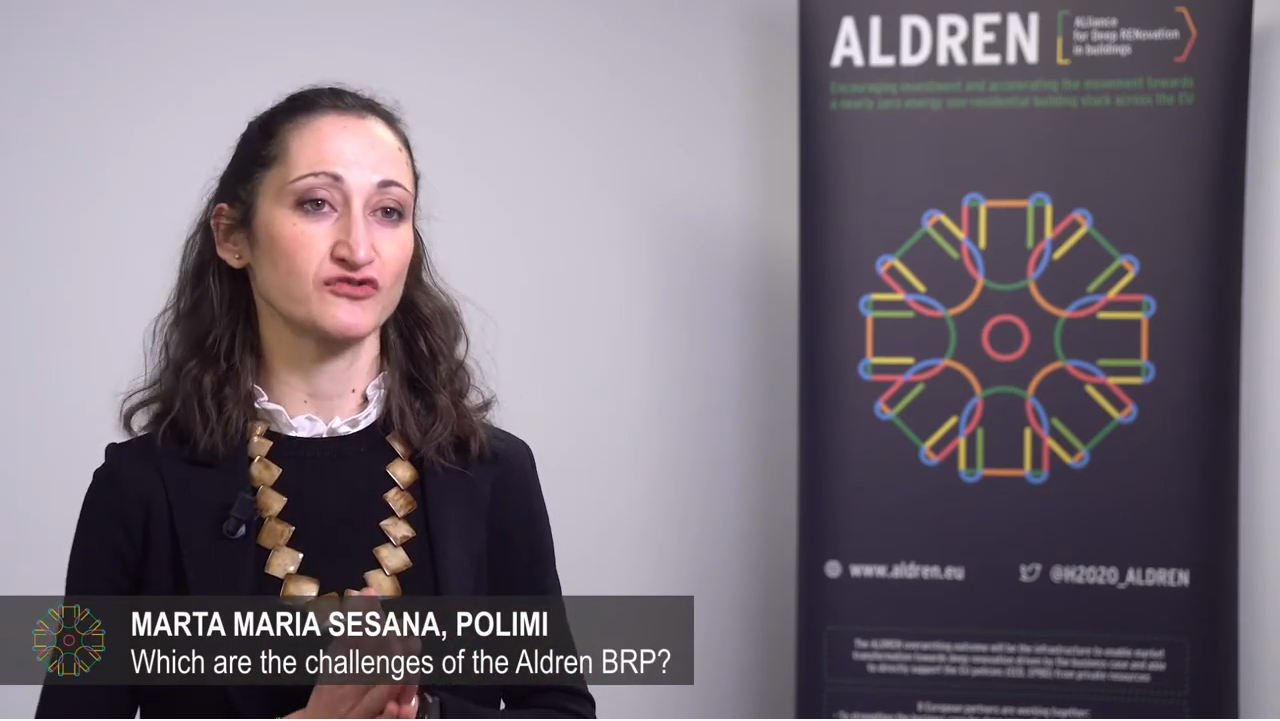ALDREN BUILDING RENOVATION PASSPORT (BRP)

The ALDREN Building Renovation Passport (BRP) is a dynamic instrument to be used and updated over time along the renovation path to deep renovation. It includes a “LogBook” where comprehensive collected data better informs building owners and managers about the current technical energy, Indoor Environmental Quality (IEQ), and financial performance status of their building and a tailored Renovation Roadmap or “RenoMap” with one or multiple steps to reach high energy performance in the medium to long term.
The ALDREN BRP for non-residential buildings – in particular for office and hotel typologies – has been developed starting from a deep analysis on the available knowledge and the lessons learned from previous experiences to be a coherent element in a common EU solution, but at the same time to become a useful and dynamic instrument to increase data accessibility and to create more transparency along the whole renovation path with big data interoperability.
The ALDREN BRP is flexible and modularity structured based on 8 modules correlated but also independent by each other. It has been developed in two versions to facilitate the use and the data comprehension: a digital version comprehensive of all data collected, calculated, or evaluated during the ALDREN BRP preparation and a paper version which could provide both core and overall indicators according to the reader (owner or public authorities or auditor).

The ALDREN BRP core concept consists in the dual element of the passport: the ALDREN BuildLog and the ALDREN RenoMap, which make the passport a sort of complementary tool to the EPC with the aim to increase owners’ awareness about the current technical energy performance status of their building and support them for its regular daily operation:
The ALDREN BuildLog
The ALDREN BuildLog has been structured into 6 modules with specific and respective protocols to follow for their fulfillment independent from one to another but at the same time, they could share data, in order to optimize the information collection process. The BuildLog could facilitate access to structured information about how the building was originally designed, what changes have been made and what is its actual performance service level and planned maintenance.
The ALDREN RenoMap
The ALDREN RenoMap allows the building owners to plan long term strategies for the renovation of their building following the ambitious energy performance requirement toward 2050 NZEB buildings objectives. It aims at reaching different objectives, both related to the coming project and the building lifetime:
- Providing a complete overview of the NZEB compliant elementary renovation actions (ERAs) which could be implemented on the building;
- Setting and evaluating a complete building renovation potential considering the application of all ERAs;
- Identifying primary packages of renovation actions to implement in the initiated project, considering components degradation, owner’s priorities, return on investment, energy performance and technical interactions;
- Setting a long-term plan and organizing the renovation packages according to technical requirements and opportunities (tenants replacement…);
- Evaluating performance indicators of the potential intermediate renovated states to provide the building owner the information to shape the initiated renovation project by integrating more or less renovation packages.
Conclusions
The ALDREN project has the goal of encouraging building renovation using a clear, robust, and comparable method providing a tailored renovation roadmap, which can be carried out in one stage or in multiple steps over a long-term vision: the so-called ALDREN BRP. The implementation and use of ALDREN BRP will support and improve the following aspects:
- Reduction of administrative burden for owners and professionals;
- Reduction of the need to recreate information over the life cycle of the building;
- Avoid of the lock-in effect and reduction of information asymmetries along the building supply chain;
- Identification of more realistic operation and maintenance costs of the renovation actions;
- Common taxonomy and languages from the different actor of the value chain;
- Improvement of cost management, facilitating decision-making and building operation and maintenance, and assessing mortgage and insurance-related risks;
- Improved energy and environmental performance and users comfort.
ALDREN PROJECT

© ALDREN. All rights reserved. Any duplication or use of objects such as diagrams in other electronic or printed publications is not permitted without the author’s agreement.
Read our LEGAL NOTICE – PRIVACY POLICY – COOKIE POLICY.





